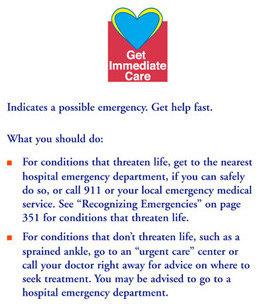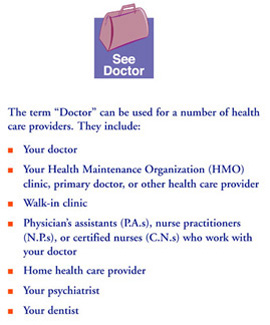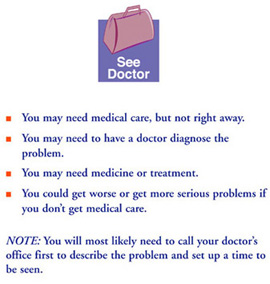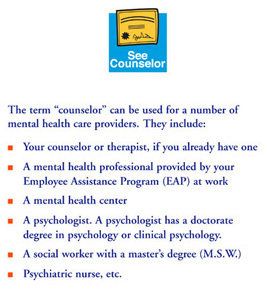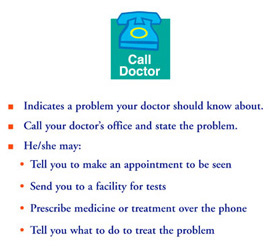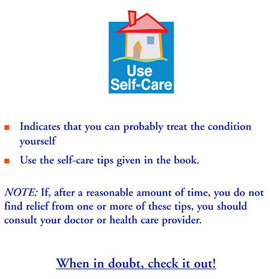Get
IMMEDIATE Care
Indicates a possible medical emergency. For conditions that could
threaten life, get to the nearest hospital emergency department or call
911 or your local EMS.
Warning signs for life-threatening emergencies are listed on page 351 in “Section IV – Emergencies & First Aid” under the heading “Recognizing Emergencies.” Examples are signs of a heart attack or stroke, bleeding that won’t stop, and a hard time breathing. Read this list as soon as you can after this seminar.
Make sure you know your emergency medical number. Post it near your phone and write it on the “Phone Numbers & Information” list on page 1 of this book.
